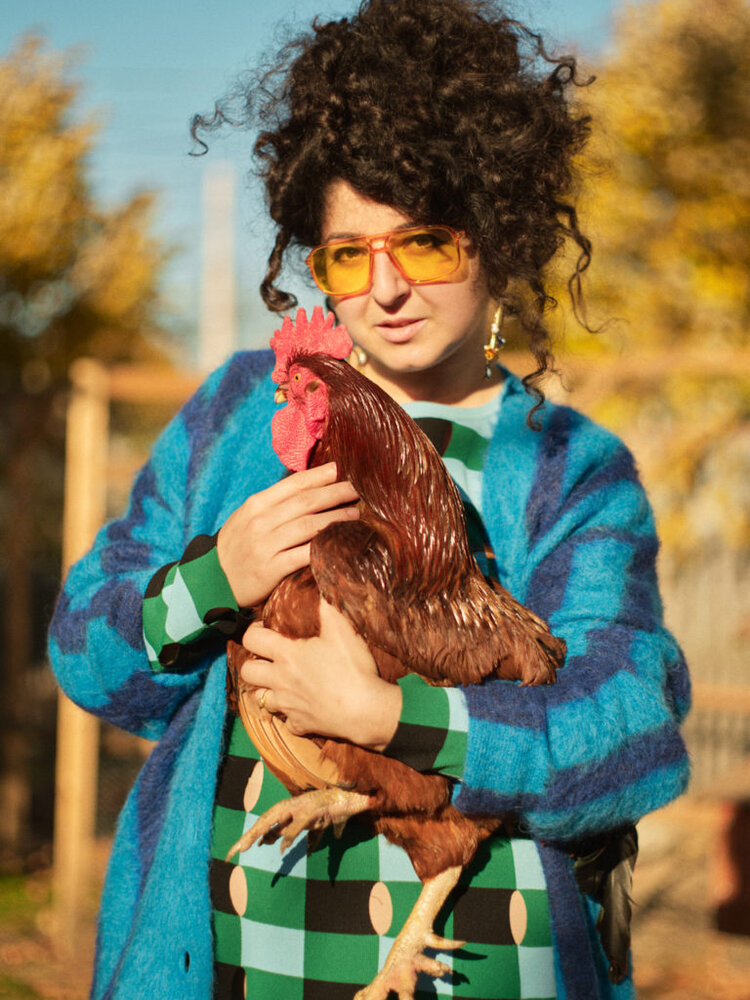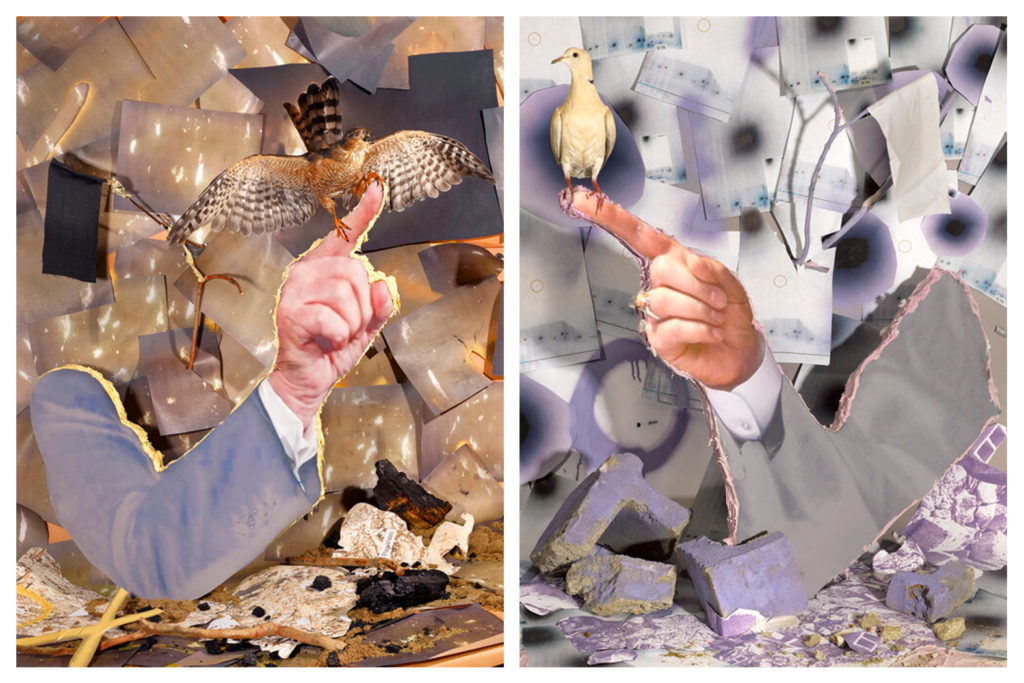Women Artists of New England: Sheida Soleimani
Hall Rockefeller

As a photographer who captures images of elaborate stage-like sets, Sheida Soleimani is engaged with contradictory modes. Photography is a medium whose authenticity we still trust, even after the wide proliferation (and increasing sophistication) of Photoshop. Theater is somewhat of its opposite, allowing an audience to believe in something temporarily, though the delusion is only participated in partly. We are not surprised when we go backstage to see that the set was made of styrofoam and the actors are caked in makeup too gaudy for any normal person to wear on the street. (In fact, a walk around Soleimani’s studio—which includes a library full of styrofoam cutouts, as well as plastic toys, fruits, and other objects—feels not so different from a theater’s own prop closet.)

But it is precisely in this space of contradiction, which exists somewhere between the flatness of her photographs and the depth of her sets, that Soleimani’s work lives comfortably. It is we, the audience, with our social conditioning and media-driven delusions, who are the uncomfortable ones. You see, Soleimani makes art about our own shortcomings and our inability to see what’s in front of us.
Many of Soleimani’s photographs treat the United States, Iran, and the relationship between them as the lens through which she analyzes truth. Soleimani, who was raised in Cincinnati by Iranian parents, has every reason to critique Iran, as the horrors her parents suffered at the hand of the Iranian government are too great to recount here. But neither is the United States above critique. “I’m not neutral in thinking that there is a very whitewashing way of looking at the Middle East from here. But also being Iranian I see the state news media is not allowing any free speech in any shape or form, so I’m also opposed to that.”
She is too astute, however, to think that “good” and “bad” are definite terms and uses her work to ask what it is we mean by such binaries. Take something as simple as the word “prison.” In the black and white terms of morality children are taught to cling to, prison is a bad place, an indication that a person has done something wrong. (White American children are, of course, taught to be unquestioning of the law.) But to a young Soleimani, prison was somewhere familiar to her through family stories, as her mother would often talk of being a political prisoner in Iran.

We can trace a line from these early experiences, which left the artist questioning objective truth, to works like a diptych in which two arms point accusingly at each other, on which two birds—a dove and a hawk—are perched. The dove, of course, is a symbol of peace, while a hawk is positioned at the spetcrum’s other end (as in the expression “warhawk”). The arms, we are told, belong to Donald Trump, former president of the United States, and Hassan Rouhani, the president of Iran. As they are disembodied, we are unsure of whose is whose, despite what the images’ iconography suggests.
Soleimani’s work is a cacophony of imagery—it is often difficult to parse what is happening within them. Their jumble doesn’t yield a clear narrative, but a neat story isn’t what she’s after. “It’s a sense of archiving for me. Archivability, history, tracing, tracking things down. When we’re in an image saturated economy these things are inundating us all the time. How do we sift or navigate through them? Often times we don’t.”

Soleimani’s words suggest that we are actually less visually literate than we might once have been. It proposes a new understanding of “fake news,” not as lies, its fakery embedded in the content, but rather in the way fact is presented. The flimsiness of the news might be derived from the surfaceness of it, our inability to glean complexity from the sheer amount we consume. It’s not fake, perhaps, but it is flat. This relates to the apparent flatness of Soleimani’s photographs (taken with a high aperture to produce such an effect) which, when viewed from the side, are a riot of dimensions.
Though many first think her photographs are elaborate photoshopped collages, the viewer eventually understands—thanks to shadows and other markers of depth—that what we’re looking at is a photograph of three dimensional space. The intense desire to move around the scene, however, quickly yields to frustration in realizing we are unable to see more of what is in front of us. We are stripped of the tools we’re accustomed to using in order to seek objective truth.
A single perspective provides no nuance, and that is precisely the point.
